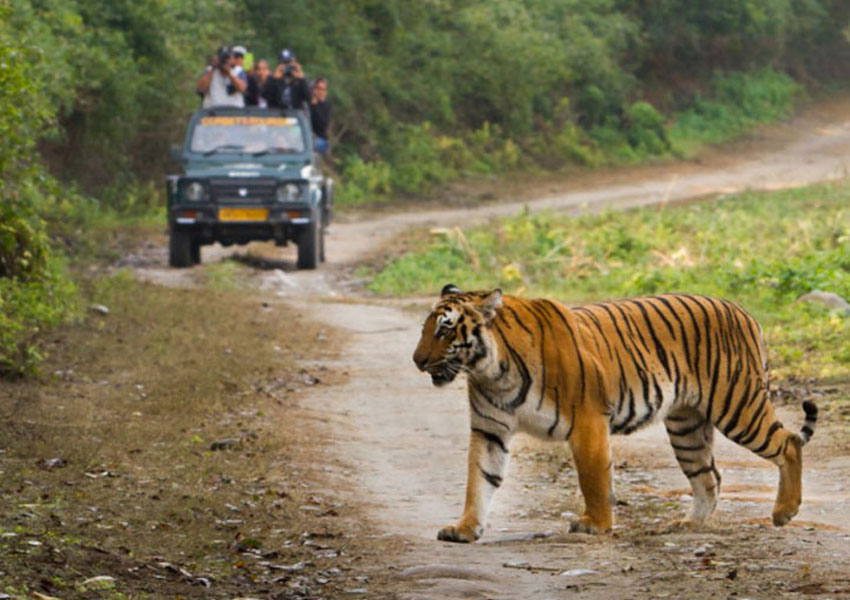
admin
04-12-2023
Tiger Tourism in India
The tiger tourism in India is very popular. India has the maximum number of tigers in the wild thus creating a unique opportunity for nature lovers to see and observe the mighty beast in its natural habitat. India’s national park has a healthy count of tigers and slowly with the help of Project Tiger and the efforts of the Government and naturalists, the numbers are steadily improving. Over period of time it was observed that the tiger’s disappearance was directly affecting the ecosystem of the jungle and its inhabitants. As per wildlife experts, tigers in India got a new life after the concept of tiger tourism in India. People visit the national park and take photos of tigers and fulfil their desire to see the live tigers. Also, tourism contributes much-needed money to the national parks and this money is spent on the effective conservation of tigers. There are around 40 tiger reserves in India. Tourism encourages the conservation of wild animals, especially tigers.
Places of tiger tourism in India
Jim Corbet National Park– This is one of the best tiger reserves in the foothills of the Himalayas in Uttrakhand. There is a good amount of tigers in the park and is also popular for its variety of Flora and Fauna. People often visit Corbett Park to see a variety of other animals like Asian elephants, leopards, sambhar, macaque, langur, chital and exotic birds etc.
Bhandavgarh National Park– This is another popular tiger reserve in India. Previously known as the “land of white tigers”, it is located in the Umaria District of Madhya Pradesh and was declared a national park in 1986.
Pench Tiger Reserve– The Pench Tiger Reserve in Madhya Pradesh is inspired by Rudyard Kipling’s Jungle Book and has 32 mammal species over here. The best time to visit the reserve is April to June. The reserve offers safari tents and well well-stocked library to the visitors.
Jim Corbett National Park – The best place to visit tigers in India
Corbett National Park comprises 520.8 km2 (201.1 sq mi) areas of hills, riverine belts, marshy depressions, grasslands and a large lake. The elevation ranges from 1,300 to 4,000 ft (400 to 1,220 m). Winter nights are cold but the days are bright and sunny. It rains from July to September.
Dense moist deciduous forest mainly consists of sal, haldu, peepal, rohini and mango trees. Forest covers almost 73% of the park, and 10% of the area consists of grasslands. It houses around 110 tree species, 50 species of mammals, 580 bird species and 25 reptile species.
The park also encompasses Patil Dun Valley which was formed by the Ramganga River. The park is located between the Siwalik Himalayas and the lesser Himalayas. You can do a jungle safari in Corbett as organized by the park and other tour operators. If you also want to enjoy your tour with a luxury stay, you can visit Kunkhet Valley Resort near Corbett Park. There are many resorts in the Corbett but Kunkhet Valley Resort offers the best resort package in Corbett National Park.
Tiger project of Govt. of India
There was a ban imposed on the hunting of tigers in 1970 and the Wildlife Protection Act came in 1972. Jim Corbett National Park was the first of the national parks to come under Project Tiger. Now the no is 50 and slowly and steadily the no of wildlife is increasing in all the reserves. Tiger reserves increase tiger tourism in India and are reserved in national parks. The total number of wild tigers has gone up to 3891 in 2016 from 1872 in 1972 according to World Wildlife Fund and Global Tiger Forum.
Categories
- Categories